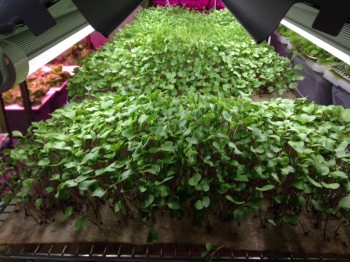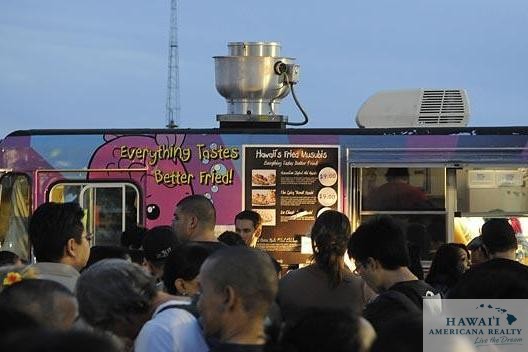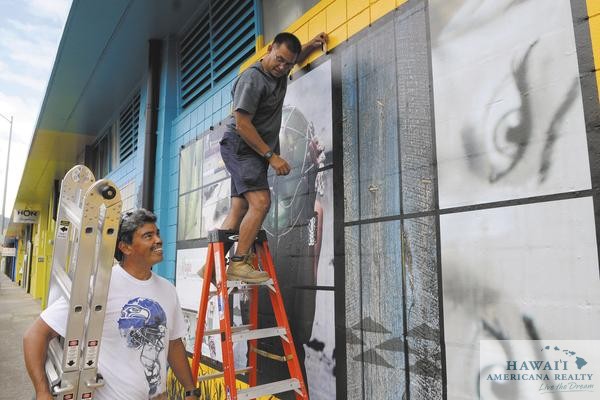Honolulu’s Kakaako to get help from feds on boosting healthy food production
Hawaii is one of 22 states to be chosen for a federal partnership to boost economic opportunities for local farmers and other businesses promoting childhood wellness via access to healthy local food in the Honolulu area of Kakaako Makai, the U.S. Environmental Protection Agency said Tuesday. The “Local Foods, Local Places” initiative involves six federal […]
Ward Village launches sales for Ke Kilohana

The Howard Hughes Corporation (NYSE: HHC) announced Friday that it is launching sales for the reserved housing program in its newest Ward Village project, Ke Kilohana at 988 Halekauwila St. Applications will be available from Saturday, March 26 until Sunday, April 3, at the Ke Kilohana Sales Gallery in the IBM Building at 1240 Ala […]
Panda Express billionaire founders put their Honolulu penthouse up for sale
The billionaire owners of Panda Restaurant Group, parent company of the Panda Express restaurant chain, have put their Honolulu penthouse up for sale for about $3.6 million, according to public records. Andrew Cherng and Peggy Cherng, the husband-and-wife founders of Panda Express, have been busy buying Hawaii real estate. The Cherngs recently purchased a beachfront […]
YES, LOCALS LIVE IN KAKAAKO
WITH ALL THE TALK OF $20 MILLION PENTHO– USES AND OFFSHORE INVESTORS PARKING THEIR MONEY IN KAKAAKO CONDOS, IT’S EASY TO BUY INTO THE WATER COOLER CHATTER THAT HONOLULU’S URBAN CORE ISN’T ATTAINABLE FOR LOCAL FAMILIES. Count the cranes popping up along or near Ala Moana Boulevard and check out Howard Hughes’ interactive model of […]
MetroGrow Hawaii: Kakaako’s first urban vertical farm

Tucked away in the heart of Kaka’ako lives a little urban vertical farm. You would never know it unless you enter a second floor door and turn a corner. Smiling and eager to share his passion for plants is Kerry Kakazu. Not only does he have a degree in biology from UH Manoa and graduate […]
One of the future plans for Kakaako is to make the area more pedestrian friendly and add more shops and restaurants.
One of the future plans for Kakaako is to make the area more pedestrian friendly and add more shops and restaurants. https://www.youtube.com/channel/UCNSfJB-VQeHpv5ThtV1VtBA
A look at Kakaako’s changing population; Who is moving in?
HONOLULU —There has been a housing boom in Kakaako, but just who is moving into this bustling urban center? Kakaako’s warehouses and auto repair shops are being replaced with new high-rise condos. And plenty of people have also been moving in as well. According to census data, in 1990 2,249 people called Kakaako home. By […]
Honolulu’s Eat The Street to move to Kakaako Gateway Park

After nearly five years at its South Street spot, Hawaii’s monthly food truck tasting event Eat The Street is moving three blocks away to Kakaako Gateway Park. Stanford Carr’s Keauhou Place condominium project at the 555 South St. location will soon begin construction. Street Grindz Owner and CEO Poni Askew said the new location has […]
KewaloIs.com

On January 30, 2015, Ward Village held the second community meeting to discuss the planning for Kewalo Harbor at the Net Shed (Kupu Training Facility) at Kewalo Harbor. Like the first meeting held in November, nearly 100 community stakeholders and officials attended the presentation. However, the main focus of this meeting was on what Kewalo […]
Honolulu’s Kakaako needs major work at the street level, experts say

Better coordination between landowners, developing a business improvement district and subsidizing retailers were some of the ideas tossed around at a town hall meeting in Downtown Honolulu that focused on the pedestrian experience in the growing Honolulu neighborhood of Kakaako. While much of the talk of Kakaako has been about those tall skyscrapers being built […]
